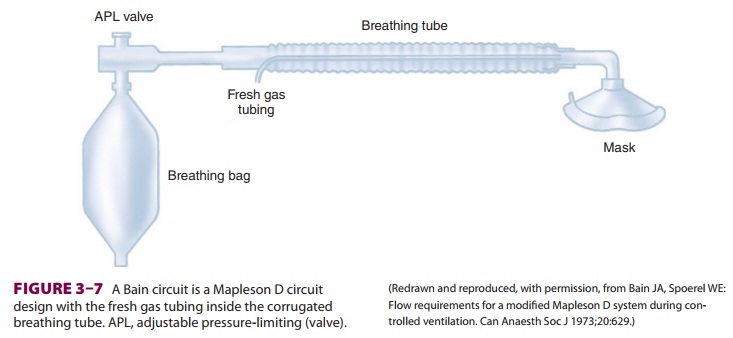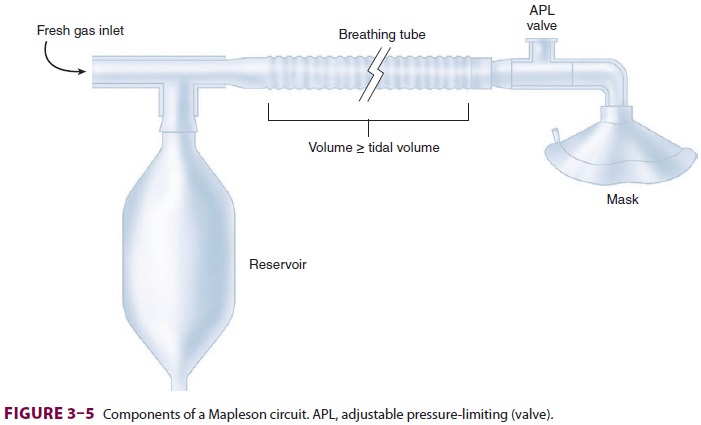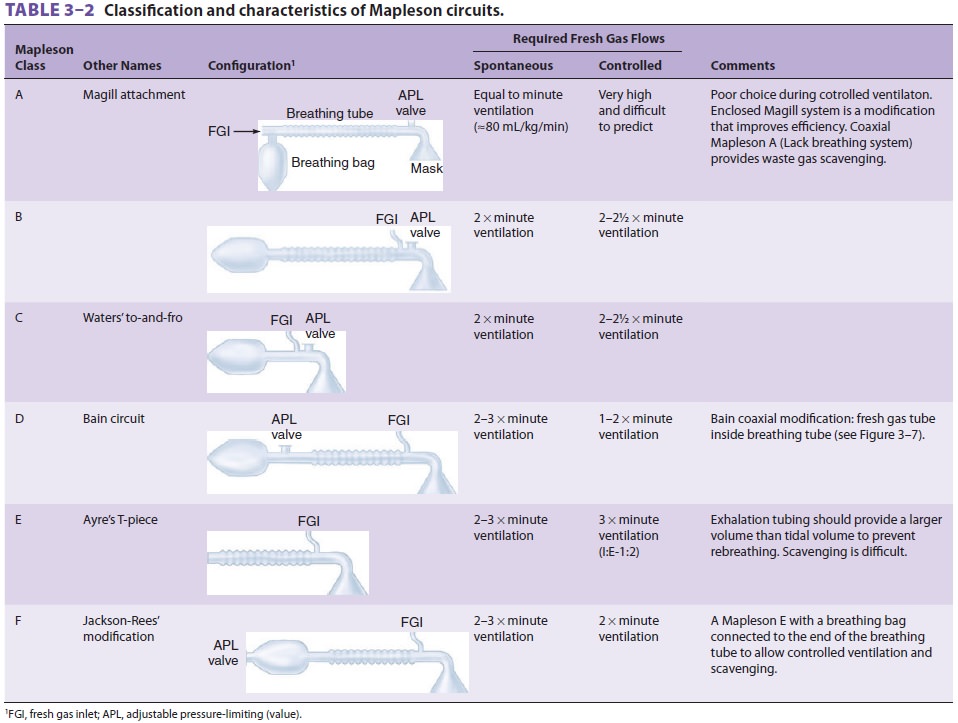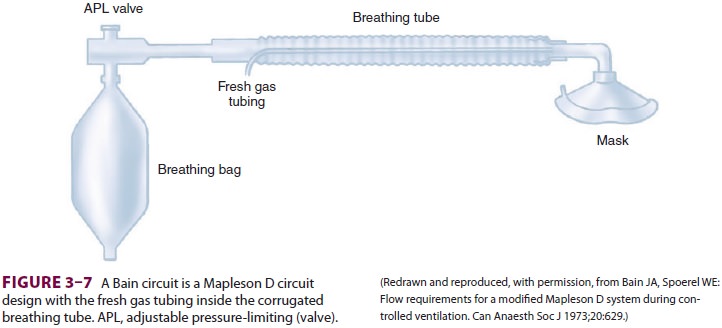Chapter: Clinical Anesthesiology: Anesthetic Equipment & Monitors : Breathing Systems
Performance Characteristics of Mapleson Circuits

Performance Characteristics of Mapleson Circuits
Mapleson circuits are lightweight,
inexpensive, and simple. Breathing-circuit efficiency is measured by the fresh
gas flow required to reduce CO2 rebreathing to a negligible value.
Because there are no unidirec-tional valves or CO2
absorption in Mapleson circuits, rebreathing is prevented by adequate fresh gas
flow into the circuit and venting exhaled gas through the APL valve before
inspiration. There is usually some rebreathing in any Mapleson circuit. The
total fresh gas flow into the circuit controls the amount. To attenuate
rebreathing, high fresh gas flows are required. The APL valve in Mapleson A, B,
and C cir-cuits is located near the face mask, and the reservoir bag is located
at the opposite end of the circuit.
Reexamine the drawing of a Mapleson A
circuit in Figure 3–5. During spontaneous ventilation, alveo-lar gas containing
CO2 will be exhaled into the breath-ing
tube or directly vented through an open APL valve. Before inhalation occurs, if
the fresh gas flow exceeds alveolar minute ventilation, the inflow of fresh gas
will force the alveolar gas remaining in the breath-ing tube to exit from the
APL valve. If the breathing-tube volume is equal to or greater than the
patient’s tidal volume, the next inspiration will contain onlyfresh gas.
Because a fresh gas flow equal to min-ute ventilation is sufficient to prevent
rebreatheing, the Mapleson A design is the most efficient Mapleson circuit for spontaneous ventilation.

Positive pressure during controlled ventila-tion, however,
requires a partially closed APL valve. Although some alveolar and fresh gas
exits through the valve during inspiration, no gas is vented during expiration,
since the exhaled gas stagnates during the expiratory phase of positive
pressure ventilation. As a result, very high fresh gas flows (greater than
three times minute ventilation) are required to prevent rebreathing with a
Mapleson A circuit during con-trolled ventilation. Fresh gas flows are
conveniently available because the fresh gas inlet is in close prox-imity to
the APL valve in a Mapleson B circuit.Interchanging the position of the APL
valve and the fresh gas inlet transforms a Mapleson A into a Mapleson D circuit (Table 3–2). The
MaplesonD circuit is efficient during controlled ventilation, since fresh gas
flow forces alveolar air away

from the patient and toward the APL valve. Thus, simply
moving components completely alters the fresh gas requirements of the Mapleson
circuits.
The Bain
circuit is a coaxial version of the Mapleson D system that incorporates the
fresh gas inlet tubing inside the breathing tube (Figure 3–7). This modification
decreases the circuit’s bulk and retains heat and humidity better than a
conventional Mapleson D circuit as a result of partial warming of the
inspiratory gas by countercurrent exchange with the warmer expired gases. A
disadvantage of this coaxial circuit is the possibility of kinking or
discon-nection of the fresh gas inlet tubing. Periodic inspec-tion of the inner
tubing is mandatory to prevent this complication; if unrecognized, either of
these mishaps could result in significant rebreathing of exhaled gas.

Related Topics